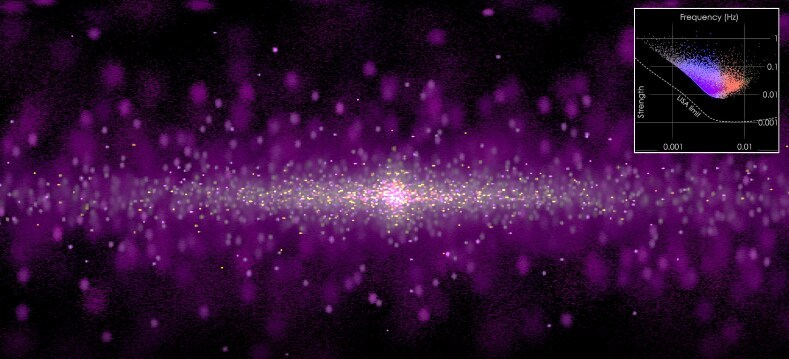Discover the mysteries of our galaxy by exploring the universe with NASA through their study of gravitational waves!

Astronomers have used simulated data to provide an insight into how the sky would look like in gravitational waves – the cosmic ripples in space-time caused by orbiting objects. The produced image showcases how space-based gravitational wave observatories, which are expected to launch in the next decade, will improve our understanding of our galaxy.
Since 2015, ground-based observatories have detected roughly a hundred events showing the mergers of systems that pair neutron stars, stellar-mass black holes, or both. The signals usually last for less than a minute, have high frequencies, and can occur anywhere in the sky, with their sources located far beyond our galaxy.
“Binary systems also fill the Milky Way, and we expect many of them to contain compact objects like white dwarfs, neutron stars, and black holes in tight orbits,” said Cecilia Chirenti, a researcher at the University of Maryland, College Park, and NASA’s Goddard Space Flight Center in Greenbelt, Maryland. “But we need a space observatory to ‘hear’ them because their gravitational waves hum at frequencies too low for ground-based detectors.”
Astronomers refer to ultra-compact binaries as UCBs, and they anticipate that LISA (Laser Interferometer Space Antenna) - a project led by the European Space Agency (ESA) in conjunction with NASA - will detect tens of thousands of these binary systems in the future. Detecting UCBs is challenging since they are usually dim in visible light, and astronomers have only discovered a few with an orbital period of less than an hour. The discovery of numerous new UCBs is one of the primary goals of LISA.
To create an all-sky view of the galaxy's UCBs, the team utilized data that simulated the expected distribution and gravitational wave signals of these binary systems. They developed a technique that combines the data into a single view. The Astronomical Journal published a paper describing this technique.
“Our image is directly analogous to an all-sky view of the sky in a particular type of light, such as visible, infrared, or X-rays,” said Goddard astrophysicist Ira Thorpe. “Gravitational waves promise that we can observe the universe in a totally different way, and this image really brings that home. I hope one day I can see a version made with real LISA data on a poster or T-shirt.”
NASA's recent simulation of our galaxy in gravitational waves has provided us with a unique glimpse into the vastness and complexity of the universe. This simulation has opened up a new window of exploration, allowing us to gain a better understanding of the physics of the universe and the mysteries it holds. As we continue to explore the depths of the universe, we can be inspired by the potential for discovery and the possibilities that await us.

 How to resolve AdBlock issue?
How to resolve AdBlock issue?